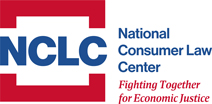Every now and then I stop and wonder about how access to broadband has changed my life and my family’s lives. My son started ninth grade at our local public high school two weeks ago and his history teacher told us that students will have access to classwork “24/7 on demand” through Google Classroom where all documents and assignment updates will be accessible from any location with Wi-Fi access. My son’s homework is to be completed on the Google Drive and submitted through the digital classroom. Chromebooks are available to all students in class. We have broadband at home, so my son has the tools he needs for his homework and classroom projects. I do not know if that is true for all of his classmates. This is what is referred to as the “homework gap.”
In modern society, access to broadband along with voice is as essential for access to opportunity as electricity was in the last century. For those with the resources to afford broadband service, broadband integration in modern life has been nearly ubiquitous. There is a growing expectation of instant information: from how we learn about breaking news (e.g., newsfeeds to our smart phones), to how we find out about and apply for jobs (online applications) and how we network professionally (LinkedIn). There is a growing presumption that consumers and citizens will be able to find information posted online. Retailers, banks, insurers, government agencies, credit card companies, employers, health providers all increasingly post important information on line and may no longer make that information readily available in paper format. The list of impacts on daily life goes on. As more aspects of modern life move online, the harmful effects of digital exclusion increase.
The Federal Communication Commission (FCC) has started a proceeding to help close this digital divide by modernizing the Lifeline program to include broadband Internet service. The Lifeline program was established in 1985 to help low-income households afford basic phone service. Connection to the phone network is essential for access to emergency services and healthcare; job opportunities; and maintaining connections to teachers, friends, and family.
Lifeline has been successful in helping low-income households connect to essential voice service and is well poised to address the affordability barrier to Internet (broadband) service. NCLC, joined by 13 other low-income consumer advocacy organizations, filed opening comments in support of the modernization of the Lifeline program. Our recommendations focus on ensuring quality Lifeline voice and broadband service. The intent of our recommendations is to keep the disruption to the existing Lifeline program to a minimum while achieving improved efficiency, accountability, and transparency, and improving consumer protections and consumer control of their Lifeline service.
So what can you do? Read this letter of support to modernize the Lifeline program and then sign on to to the letter so the FCC knows that your organization supports the move to modernize Lifeline. Deadline to sign: Friday, September 25.
